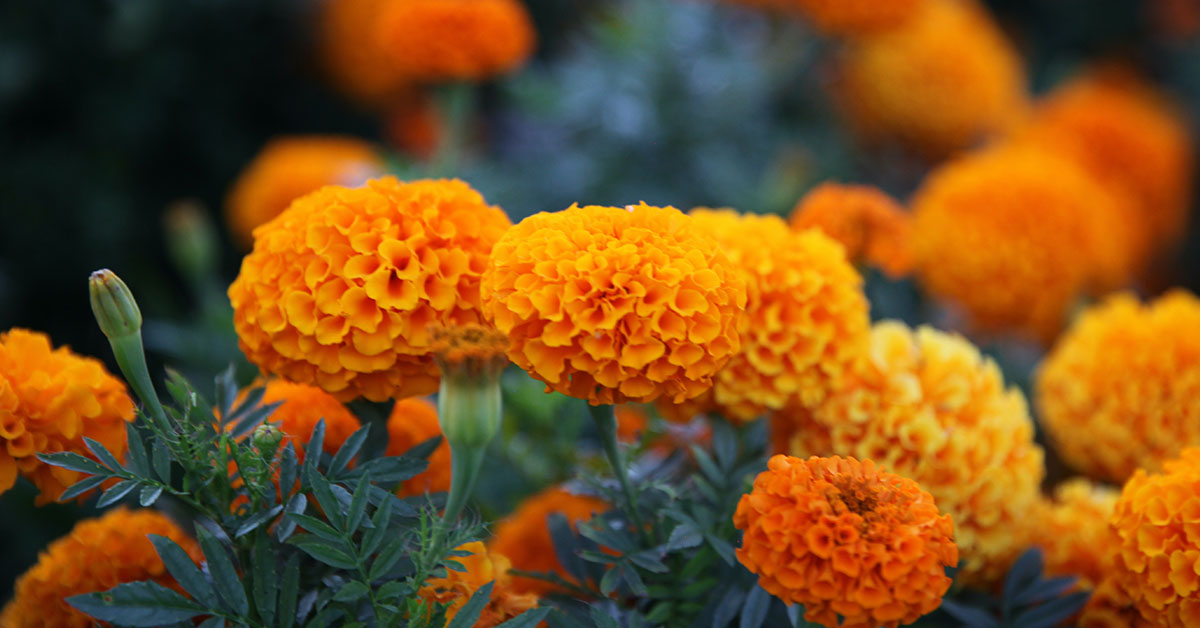Marigolds, with their vibrant colors and delightful fragrance, are a popular choice for gardeners looking to add a touch of beauty to their outdoor spaces. To ensure these cheerful flowers thrive and reach their full potential, it is crucial to provide them with the right nutrients. Selecting the best fertilizer for marigolds can make all the difference in their growth, blooming, and overall health.
In this article, we will explore various types of fertilizers, their nutrient compositions, and the specific needs of marigolds. Whether you are a seasoned gardener or a beginner, understanding the importance of proper fertilization will help you create a stunning display of marigolds that will be the envy of your neighborhood.
Do Marigolds need to be fertilized?
Marigolds are generally low-maintenance plants that can thrive in various soil conditions. However, providing them with proper fertilization can enhance their growth and overall health. Before planting marigolds, it is recommended to prepare the soil by incorporating organic matter such as compost or well-rotted manure.
This will provide essential nutrients and improve soil structure. During the growing season, marigolds can benefit from regular fertilization. A balanced, water-soluble fertilizer with a ratio such as 10-10-10 or 20-20-20 can be applied every two to three weeks. Alternatively, you can use a slow-release granular fertilizer at the beginning of the season, following the package instructions for application rates.
When applying fertilizer, it is important to avoid over-fertilization, as excessive nutrients can lead to lush foliage but fewer flowers. Be sure to follow the recommended dosage and avoid getting fertilizer directly on the plant’s leaves to prevent burning.
Additionally, marigolds are sensitive to high nitrogen levels, so it is advisable to choose a fertilizer with a lower nitrogen content compared to phosphorus and potassium. This will promote healthy root development and abundant flowering. Remember to water the plants thoroughly after fertilizing to help nutrients reach the root zone. Regular watering, proper sunlight, and adequate spacing between plants are also essential for optimal growth and blooming of marigolds.
The best fertilizer for Marigolds
For growing marigolds, a balanced fertilizer with an NPK ratio of 10-10-10 or 20-20-20 is generally recommended. This means the fertilizer contains equal amounts of nitrogen (N), phosphorus (P), and potassium (K).
Marigolds are relatively low-maintenance plants and do not require excessive amounts of nutrients. A balanced fertilizer will provide them with the necessary nutrients for healthy growth and vibrant blooms.
It’s important to follow the instructions on the fertilizer packaging for application rates and frequency. Generally, you can apply the fertilizer every 4-6 weeks during the growing season. Be sure to water the plants well after applying the fertilizer to help it penetrate the soil and reach the plant’s roots.
When to fertilize Marigolds
The ideal time to fertilize Marigold plants is before planting them in the ground or containers. Incorporate a slow-release granular fertilizer into the soil or potting mix during preparation. This will provide a steady supply of nutrients throughout the growing season. Additionally, you can apply a balanced liquid fertilizer every 4-6 weeks during the active growing period to promote healthy growth and abundant blooms. Be sure to follow the instructions on the fertilizer packaging for proper application rates.
Common issues with fertilizing Marigolds
When fertilizing Marigolds, there are a few common issues or problems that can arise:
- Over-fertilization: Marigolds are relatively low-maintenance plants and can be sensitive to excessive fertilization. Over-fertilization can lead to nutrient burn, causing the leaves to turn yellow or brown, and the plant may become stunted or even die. It is essential to follow the recommended dosage and frequency of fertilization.
- Imbalanced nutrients: Marigolds require a balanced supply of nutrients, including nitrogen (N), phosphorus (P), and potassium (K). If the fertilizer used has an imbalanced ratio of these nutrients, it can lead to poor growth, reduced flowering, or even nutrient deficiencies. It is advisable to use a balanced fertilizer specifically formulated for flowering plants.
- Nitrogen deficiency: Marigolds generally require a moderate amount of nitrogen for healthy growth and vibrant blooms. A nitrogen deficiency can result in pale or yellowing leaves, stunted growth, and reduced flower production. If nitrogen deficiency is suspected, applying a nitrogen-rich fertilizer or organic amendments like compost can help rectify the issue.
- Phosphorus deficiency: Phosphorus is crucial for promoting root development, flowering, and overall plant health. A phosphorus deficiency can cause stunted growth, weak stems, and reduced flower production. If phosphorus deficiency is suspected, using a fertilizer with a higher phosphorus content or adding bone meal to the soil can help address the problem.
- Poor soil drainage: Marigolds prefer well-draining soil. If the soil is poorly drained, excessive moisture can lead to root rot and other fungal diseases. When fertilizing, it is essential to ensure that the soil has adequate drainage to prevent waterlogging and subsequent plant health issues.
To avoid these problems, it is recommended to conduct a soil test before fertilizing to determine nutrient deficiencies or imbalances. Additionally, following the instructions on the fertilizer package and maintaining proper watering practices can help ensure healthy growth and abundant blooms in Marigolds.













